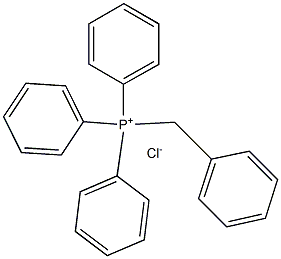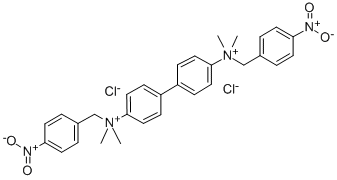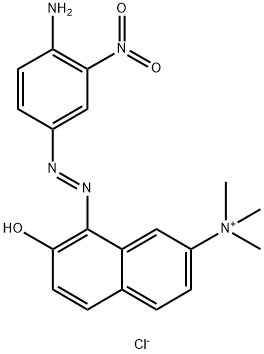PHENYLTRIMETHYLAMMONIUM HYDROXIDE
Synonym(s):Phenyltrimethylammonium hydroxide;TMAH
- CAS NO.:1899-02-1
- Empirical Formula: C9H15NO
- Molecular Weight: 153.22
- MDL number: MFCD00041899
- EINECS: 217-592-3
- SAFETY DATA SHEET (SDS)
- Update Date: 2025-01-27 09:38:02

What is PHENYLTRIMETHYLAMMONIUM HYDROXIDE?
Chemical properties
clear colorless solution
The Uses of PHENYLTRIMETHYLAMMONIUM HYDROXIDE
Trimethylanilinium hydroxide is the most common reagent in this type of organic ammonium salts.Other reagents used are tetramethylammonium hydroxide and m-(trifluoromethylphenyl)trimethylammonium hydroxide. the acetate salt and fluoride salt have also been reported.
The Uses of PHENYLTRIMETHYLAMMONIUM HYDROXIDE
Learn more in the Product Information
Definition
ChEBI: A quaternary ammonium salt that is the hydroxide of trimethylphenylammonium. It is a derivatisation agent used in gas chromatography/mass spectrometry applications.
General Description
Trimethylphenylammonium hydroxide (TMAH) is a methylating reagent.
Properties of PHENYLTRIMETHYLAMMONIUM HYDROXIDE
| Boiling point: | 65 °C |
| refractive index | n |
| Flash point: | 10 °C |
| storage temp. | 2-8°C |
| form | Liquid |
| color | Clear colorless |
| BRN | 3917033 |
| CAS DataBase Reference | 1899-02-1(CAS DataBase Reference) |
| EPA Substance Registry System | Benzenaminium, N,N,N-trimethyl-, hydroxide (1899-02-1) |
Safety information for PHENYLTRIMETHYLAMMONIUM HYDROXIDE
| Signal word | Danger |
| Pictogram(s) |
 Corrosion Corrosives GHS05 |
| GHS Hazard Statements |
H314:Skin corrosion/irritation |
| Precautionary Statement Codes |
P280:Wear protective gloves/protective clothing/eye protection/face protection. P363:Wash contaminated clothing before reuse. P301+P330+P331:IF SWALLOWED: Rinse mouth. Do NOT induce vomiting. P303+P361+P353:IF ON SKIN (or hair): Remove/Take off Immediately all contaminated clothing. Rinse SKIN with water/shower. P305+P351+P338:IF IN EYES: Rinse cautiously with water for several minutes. Remove contact lenses, if present and easy to do. Continuerinsing. |
Computed Descriptors for PHENYLTRIMETHYLAMMONIUM HYDROXIDE
New Products
Indole Methyl Resin tert-butyl 9-methoxy-3-azaspiro[5.5]undecane-3-carboxylate Boc-His(Boc)-OH 2-CTC Resin 4-Chloro-7-tosy1-7Hpyrrolo[2,3-d]pyrimidine 5,7-Dibromo-1H-indole 2,5-dichloro-N-hydroxy-4,6-dimethylpyridine-3-carboximidamide 2,2-Dimethoxy-7-azaspiro[3.5]nonane hydrochloride 4-chloromethyl-5-methyl-1,3-dioxol-2-one (DMDO-Cl) R-2-BENZYLOXY PROPIONIC ACID 1,1’-CARBONYLDIIMIDAZOLE 1,1’-CARBONYLDI (1,2-4 TRIAZOLE) N-METHYL INDAZOLE-3-CARBOXYLIC ACID 4-((2-hydroxyethyl)thio)benzoic acid 1-(TERT-BUTOXYCARBONYL)-2-PYRROLIDINONE Methyl 6-methylnicotinate 3-Pyridineacrylic acid tert-Butyl carbazate TETRAHYDRO-2H-PYRAN-3-OL 2-((4-morpholinophenylamino) (methylthio) methylene) malononitrile 3-(4-morpholinophenylamino)-5-amino-1H-pyrazole-4-carbonitrile 2,4-dihydroxybenzaldehyde 1,3-Diethyl-1,3-Diphenylurea Methyl 2-methylquinoline-6-carboxylateRelated products of tetrahydrofuran


![5,10,15,20-TETRAKIS[4-(TRIMETHYLAMMONIO)PHENYL]-21H,23H-PORPHINE TETRA-P-TOSYLATE SALT](https://img.chemicalbook.in/CAS/GIF/69458-20-4.gif)





You may like
-
 Phenyltrimethylammonium hydroxide, 0.1 M In methanol CAS 1899-02-1View Details
Phenyltrimethylammonium hydroxide, 0.1 M In methanol CAS 1899-02-1View Details
1899-02-1 -
 Trimethylphenylammonium Hydroxide (ca. 8.5% in Methanol) CAS 1899-02-1View Details
Trimethylphenylammonium Hydroxide (ca. 8.5% in Methanol) CAS 1899-02-1View Details
1899-02-1 -
 Trimethylphenylammonium hydroxide solution CAS 1899-02-1View Details
Trimethylphenylammonium hydroxide solution CAS 1899-02-1View Details
1899-02-1 -
 Trimethylphenylammonium hydroxide solution CAS 1899-02-1View Details
Trimethylphenylammonium hydroxide solution CAS 1899-02-1View Details
1899-02-1 -
 Pyridine 99.5% HPLC /UV SpectroscopyView Details
Pyridine 99.5% HPLC /UV SpectroscopyView Details
110-86-1 -
 Dibutyl PhthalateView Details
Dibutyl PhthalateView Details
84-74-2 -
 Imidazole Spot supply, competitive priceView Details
Imidazole Spot supply, competitive priceView Details
288-32-4 -
 Thiourea 99% ARView Details
Thiourea 99% ARView Details
62-56-6
Statement: All products displayed on this website are only used for non medical purposes such as industrial applications or scientific research, and cannot be used for clinical diagnosis or treatment of humans or animals. They are not medicinal or edible.
